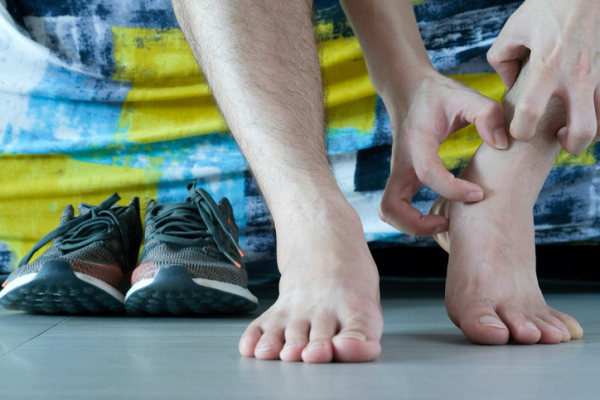

When I was on the junior varsity basketball team in high school, I wasn't surprised when I developed a case of itchy, flaky athlete's foot. After all, I was an "athlete," so I assumed it was a sign of dedication and hard work.
I was shocked when my mother told me the truth: it was due to poor foot hygiene, not my dribbling skills.
Fast-forward almost four decades, and I’m much more diligent about skin care. Still, some skin issues plague me at times, like they do many men. Here is a look at two common problems and solutions.
Dry skin
Symptoms of dry skin include scaly patches (with or without redness), itching, and overall dryness. You can get dry skin year-round — from the heavy heat of summer to the bitter cold of winter. Sun exposure damages skin, leaving it thinner and less likely to hold in moisture over time. Also, aging skin produces less of the natural oils that keep skin lubricated.
Treatment. The first line of defense is a moisturizer that softens and smooths skin with water and lipids (fats). Some moisturizers attract water to the skin and seal it in. Others prevent moisture loss by coating skin with a thick, impermeable layer.
- Petroleum jelly. This waxy, greasy substance stops water loss without clogging pores. It can be used by itself but is also an ingredient in many moisturizers and ointments. Because petroleum jelly doesn’t contain water, it’s best used while the skin is still damp after bathing to seal in moisture.
- Mineral oil. Mineral oil has the same effect but without a greasy feeling. It also should be used while skin is damp.
- Moisturizing lotions and creams. These products contain both water and oils. They’re less greasy and more cosmetically appealing than petroleum jelly or oils. Look for moisturizers with at least one of the following ingredients: glycerin, urea, pyroglutamic acid, sorbitol, lactic acid, lactate salts, or alpha hydroxy acids.
Prevention. Try a few changes to help prevent dry skin:
- Add moisture to the air with a humidifier or a pan of water set atop the radiator.
- In the shower or bath, use lukewarm water (hot water can dry the skin by stripping it of natural oils).
- Choose nondrying soaps with no abrasives or irritants. Super-fatted soaps or cleansing bars are less drying than regular, liquid, or antibacterial soaps.
- To retain the water your skin absorbs while showering or bathing, apply jelly, oil, or moisturizer immediately afterward.
Athlete’s foot
Athlete’s foot is caused by dermatophytes, a group of fungi on the surface of the skin. Tell-tale signs include intense itching; cracked, blistered, or peeling areas of skin, especially between the toes; and redness and scaling on the soles. Dermatophytes thrive in warm, moist environments like pools, showers, and locker rooms where people walk with bare feet. The warm, moist environment of sweaty socks and shoes encourages them to grow.
Treatment. First, try an over-the-counter antifungal ointment, cream, or powder, such as clotrimazole (Lotrimin AF, Mycelex, generic), terbinafine (Lamisil AT, Silka,), or miconazole (Lotrimin AF spray, Micatin). It can take weeks for an infection to improve, and recurrences are common. If symptoms don't improve after several weeks, consult a doctor, who may prescribe antifungal pills.
Prevention. Keeping feet clean and dry is the best way to ward off athlete’s foot. Also, do the following:
- Wash your feet well every day, and wear a clean pair of socks after your bath or shower.
- Take time to dry your feet thoroughly (including each toe and especially the web space between the toes) after you bathe, shower, or swim.
- Wear flip-flops or sandals around public pools and in gym locker rooms and showers.
- Wear moisture-wicking socks that absorb sweat.
- Don’t wear the same shoes two days in a row. Give shoes a 24-hour break between wearings to air out and dry.

